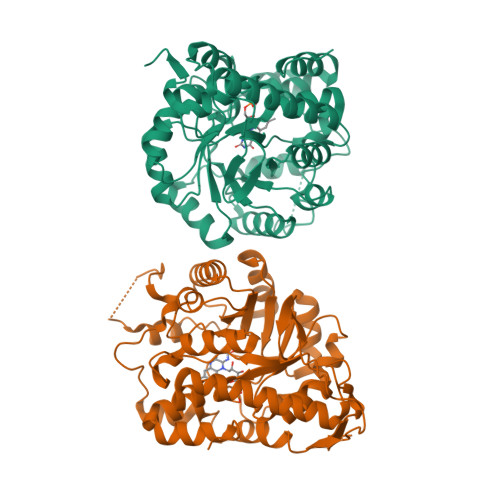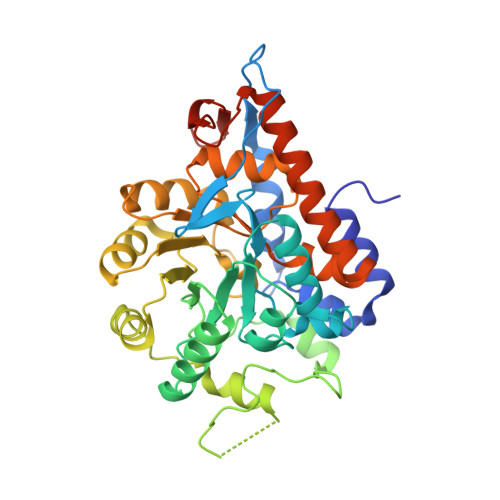Structures of glycolate oxidase from Nicotiana benthamiana reveal a conserved pH sensor affecting the binding of FMN.
Liu, Y., Wu, W., Chen, Z.(2018) Biochem Biophys Res Commun 503: 3050-3056
- PubMed: 30143257
- DOI: https://doi.org/10.1016/j.bbrc.2018.08.092
- Primary Citation of Related Structures:
5ZBM, 5ZBN - PubMed Abstract:
Glycolate oxidase (GOX), a flavin mononucleotide (FMN)-dependent enzyme, modulates reactive oxygen species-mediated signal transduction in green plants. It has been a target protein for crop improvement because of performing a key step in photorespiration that causes the energy losses. In human, GOX is involved in the production of oxalate, which is a key metabolite in the formation of kidney stone. Here, we report the first apo-GOX structure and its complex structure with cofactor FMN from Nicotiana benthamiana by X-ray crystallography. The binding of FMN induces a pronounced conformational change of GOX tetramer. Interestingly, a conserved pH sensor found among different species might directly regulate the binding of FMN and the enzyme activity. Combined with enzymatic experiments and biophysical analyses, we provide new insights in the molecular mechanism of regulating GOX biological activity reversibly and new methods of agricultural production and clinical application.
Organizational Affiliation:
Beijing Advanced Innovation Center for Food Nutrition and Human Health, State Key Laboratory of Agrobiotechnology, China Agricultural University, Beijing 100193, China.




















